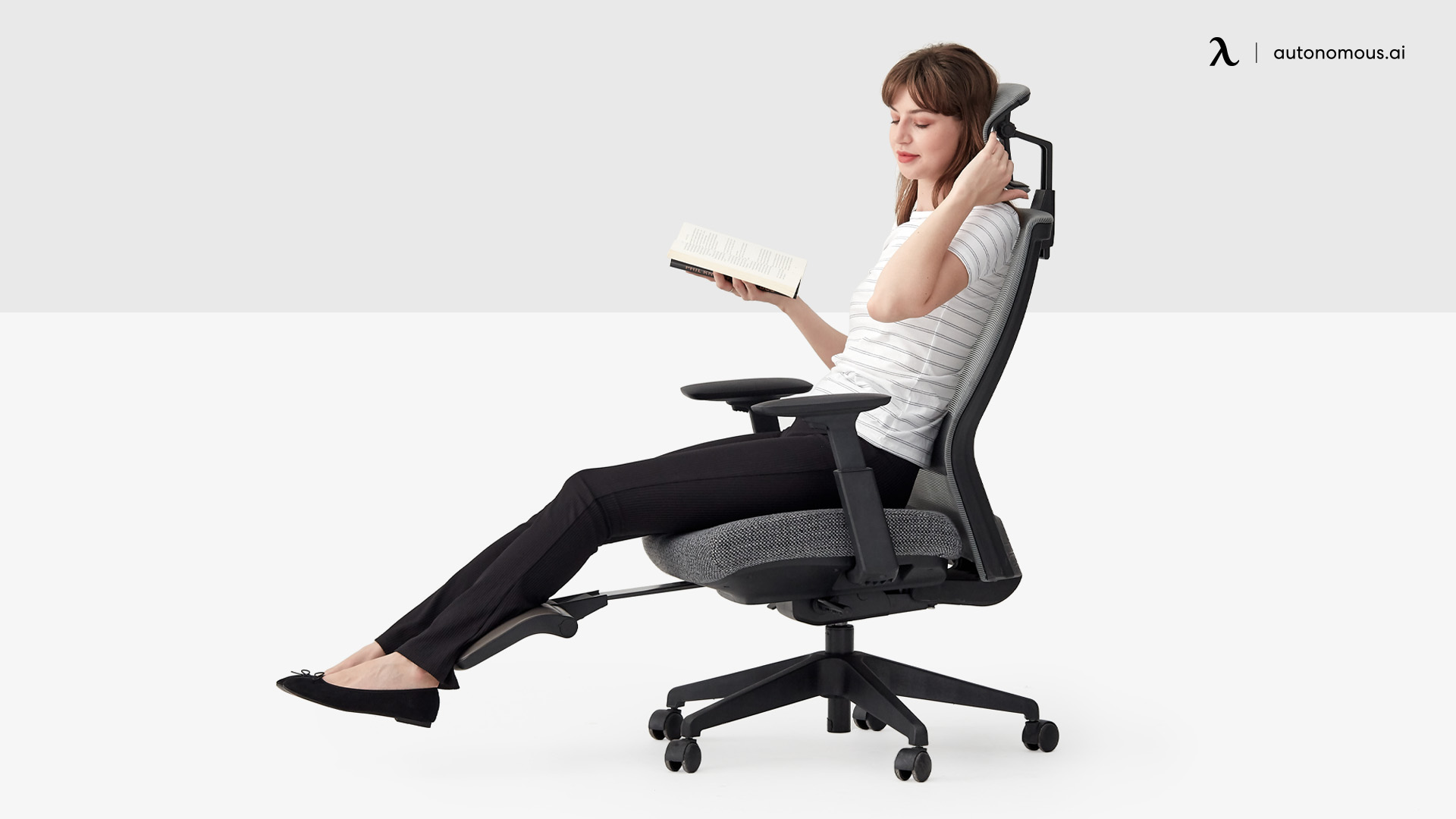Ergonomic Features for Extended Use: Best Office Chair For 24 Hour Use

Sustaining comfort and proper posture during 24-hour chair use requires meticulous consideration of ergonomic design. A chair intended for such extended periods must actively support the body’s natural curves and minimize strain on muscles and joints. Compromising on ergonomics can lead to significant discomfort, pain, and long-term health issues.
Ergonomic Feature Comparison Across Price Ranges
The following table compares crucial ergonomic features across three price ranges: budget, mid-range, and premium. The level of adjustability and material quality generally increase with price, directly impacting comfort and support during prolonged sitting.
| Feature | Budget | Mid-Range | Premium |
|---|---|---|---|
| Lumbar Support | Basic built-in lumbar support; may be insufficient for extended use. | Adjustable lumbar support with height and depth adjustment; often includes a contoured support. | Highly adjustable lumbar support with multiple adjustment points and advanced ergonomic shaping; potentially featuring dynamic lumbar support that adapts to movement. High-quality materials for superior comfort. |
| Adjustable Height | Simple height adjustment mechanism; limited range of motion. | Smooth and precise height adjustment with a wider range; gas lift cylinder for easy operation. | Advanced height adjustment mechanism with precise control and a wide range of motion; potentially featuring a pneumatic system for effortless adjustments. |
| Armrests | Fixed armrests; may not be height or width adjustable. | Adjustable armrests; height and width adjustable to accommodate various body types and postures. | 4D adjustable armrests (height, width, depth, and angle) offering highly customized support; often featuring padded armrests with high-quality materials for enhanced comfort. |
| Headrest | Absent or fixed, non-adjustable headrest. | Adjustable headrest; height adjustment to support the neck and head. | Adjustable headrest with multiple adjustment points (height, angle, depth); potentially featuring ergonomic shaping for optimal neck support and high-quality materials for comfort. |
Weight Distribution and Pressure Relief
Proper weight distribution is paramount for prolonged sitting. Uneven pressure can lead to discomfort, numbness, and circulation issues. Ideal weight distribution involves evenly distributing weight across the seat pan and backrest, minimizing pressure points on the thighs, buttocks, and lower back.
Best office chair for 24 hour use – Imagine a visual representation: A seated person’s weight is depicted as a cloud of evenly distributed pressure, gently resting across the seat and back of the chair. There are no concentrated areas of intense pressure; instead, the pressure is dispersed smoothly across the contact surfaces. The spine maintains its natural curves, supported by the backrest, and the thighs are slightly angled, preventing pressure buildup behind the knees.
Lumbar Support Mechanisms, Best office chair for 24 hour use
Different lumbar support mechanisms cater to various needs and preferences. Built-in lumbar support provides a fixed level of support, while adjustable mechanisms allow for customization. Adjustable lumbar support, offering height and depth adjustment, is ideal for accommodating different body types and postures. Dynamic lumbar support systems react to the user’s movements, providing customized support throughout the day. The effectiveness of each mechanism depends on the individual’s body shape, posture, and specific needs. For instance, individuals with pronounced lower back curves may benefit from a highly adjustable lumbar support, while those with less pronounced curves might find a well-designed built-in support sufficient.
Material and Durability Considerations

Choosing the right materials for a 24-hour office chair is crucial for both comfort and longevity. The chair will endure significant wear and tear, demanding materials that can withstand prolonged use while maintaining their supportive properties and aesthetic appeal. The selection process involves careful consideration of durability, comfort, and breathability, as these factors directly impact the user’s experience and the chair’s lifespan.
Material Comparison: Mesh, Leather, and Fabric
The choice between mesh, leather, and fabric significantly impacts a chair’s durability and comfort for extended use. Each material offers unique advantages and disadvantages, influencing the overall user experience.
- Mesh: Known for its excellent breathability, mesh fabric allows for superior airflow, preventing overheating and discomfort during prolonged sitting. However, mesh can be less durable than leather or some high-quality fabrics, potentially sagging or tearing over time with intense, prolonged use. The durability of mesh varies significantly depending on the quality and weave of the material; tightly woven, high-density mesh offers superior longevity.
- Leather: Genuine leather offers exceptional durability and a luxurious feel. It develops a rich patina over time and is resistant to wear and tear. However, leather can be less breathable than mesh, potentially leading to discomfort during hot weather or extended use. The cost of genuine leather is also significantly higher than mesh or fabric. Furthermore, the quality of leather varies greatly, with full-grain leather being the most durable and expensive option.
- Fabric: Fabric upholstery offers a wide range of options in terms of texture, durability, and cost. High-quality fabrics, such as polyester blends or durable nylon, can offer good durability and comfort. However, fabric can be prone to staining and wear, and breathability varies significantly depending on the fabric’s weave and composition. Certain fabrics may pill or lose their shape over time.
Potential Wear Points and Mitigation Strategies
Several areas of an office chair are particularly susceptible to wear and tear during extended use. Understanding these points allows for the selection of materials and construction techniques that enhance longevity.
- Seat Cushion: The seat cushion experiences the most pressure and wear. High-density foam with a durable cover (such as a tightly woven fabric or high-quality leather) resists compression and sagging. Consider chairs with replaceable cushions for extended lifespan.
- Armrests: Armrests often bear significant weight and friction. Durable materials like reinforced plastic, polished wood, or metal are more resistant to scratches and wear. Padded armrests should use high-density foam covered in durable fabric or leather.
- Backrest: The backrest supports the user’s spine and endures constant pressure. A strong frame (often steel or aluminum) combined with high-quality mesh or fabric provides both support and breathability. Consider chairs with lumbar support mechanisms built to withstand continuous use.
- Base and Casters: The base and casters are crucial for stability and mobility. A heavy-duty five-star base made of aluminum or reinforced nylon, paired with high-quality casters, ensures smooth movement and longevity. Consider chairs with replaceable casters.
Breathability and Material Selection
Breathability is paramount for prolonged comfort in an office chair. Overheating and excessive sweating can lead to discomfort and reduced productivity.
- Mesh Fabrics: Mesh is inherently breathable due to its open weave structure. This allows for constant airflow, keeping the user cool and comfortable. High-quality mesh fabrics, often made from polyester or nylon blends, offer superior durability and breathability compared to cheaper alternatives.
- Perforated Leather: While leather is not inherently breathable, perforated leather allows for some airflow. However, this is generally less effective than mesh. The perforations should be strategically placed to maximize ventilation.
- Breathable Fabrics: Some fabrics, such as those with a loose weave or incorporating moisture-wicking technologies, offer better breathability than tightly woven fabrics. Look for fabrics with descriptions indicating their breathability or moisture-wicking properties.
